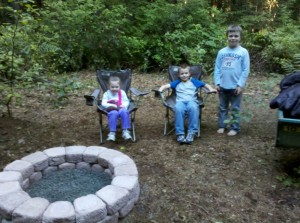 When considering the purchase of a rural home it’s important to look at how much it will change your life. It’s convenient living in, or near, the city where stores, jobs, and services are nearby. There is also internet access and utilities that may not be available in a more rural area. Unless you have a steady income from retirement, or disability, or you’re independently wealthy, you need to have gainful employment. If you can handle these possible down-sides, living in a rural environment has a lot of up-sides that, I believe, more than make up for the negatives. It’s great to see wild life, enjoy the silence, and have room to raise animals and plants for personal and/or financial gain.
When considering the purchase of a rural home it’s important to look at how much it will change your life. It’s convenient living in, or near, the city where stores, jobs, and services are nearby. There is also internet access and utilities that may not be available in a more rural area. Unless you have a steady income from retirement, or disability, or you’re independently wealthy, you need to have gainful employment. If you can handle these possible down-sides, living in a rural environment has a lot of up-sides that, I believe, more than make up for the negatives. It’s great to see wild life, enjoy the silence, and have room to raise animals and plants for personal and/or financial gain.
One of the challenges of moving to a rural area is commuting to the city for work, or finding a way to transfer a career to a more rural area. Other options include telecommuting or home-based jobs that provide the needed flexibility. I have an occupation which allows me to work from home 95% of the time. One of the greatest challenges that I have faced is finding good internet service. I rely on high-speed internet for work to join conference/video calls, solve customer problems, and generally enjoy the benefits the internet has to offer. Other challenges include commute time, gas expenses, and shopping availability. Since we often have to travel a lot further to shop we have to plan accordingly and stock-up.
Shortly after moving into our new house, about 30 miles from Seattle, I called around trying to find high-speed internet service. I was dismayed to discover that the options were limited to satellite, mobile hot spot, or a land line. I tried both satellite and a mobile hot spot with mixed results. Satellite internet provided sufficient bandwidth but with high latency it felt pretty sluggish. The mobile hot spot worked, most of the time, and was fast enough, most of the time, and had low latency, most of the time. In my line of work, quality/reliable high-speed internet is a requirement. I ended up signing up for a $435/month T1 connection that would provide 1.5Mb with unlimited usage each month. This type of connection is extremely low latency and no shared bandwidth which provides a consistent connection at a very high cost (relative to consumer prices). I remain shocked that living this close to Seattle I struggle to find quality affordable high-speed internet.
Another problem I face is commuting to various locations around the greater Seattle area. Even though downtown Seattle is only 40 miles away, it takes me up to an hour and a half to get there. Any time I have to drive to a job it’s a road trip. I pressure all of my clients to let me work remotely and work harder because of it. Working from home has saved me around $400/month in gas expenses.
 Living this way also encourages personal preparation and self-reliance as help/resources are much further away, the power typically goes out more often, you are more likely to get snowed in, or have a tree fall across the driveway, law enforcement/EMS takes longer to respond, etc., etc.. But in the end, living in a more rural area is well worth it to our family. Raising our kids in an area where they can run out and play in the woods and explore and adventure is a big deal, that’s how I grew up.
Living this way also encourages personal preparation and self-reliance as help/resources are much further away, the power typically goes out more often, you are more likely to get snowed in, or have a tree fall across the driveway, law enforcement/EMS takes longer to respond, etc., etc.. But in the end, living in a more rural area is well worth it to our family. Raising our kids in an area where they can run out and play in the woods and explore and adventure is a big deal, that’s how I grew up.





